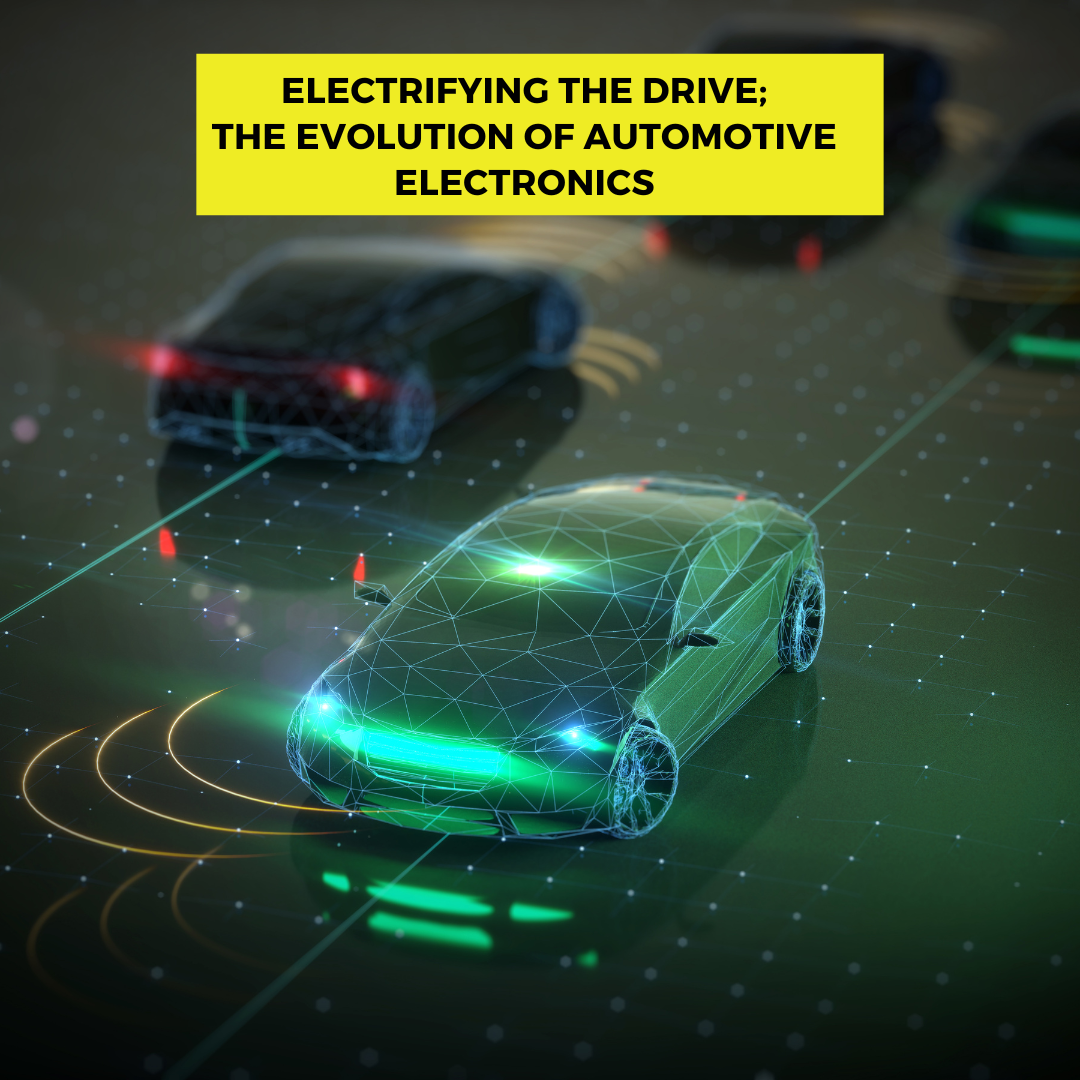
In the ever-evolving automotive landscape, the integration of cutting-edge electronics has sparked a transformative revolution, reshaping not only the driving experience but the entire automotive industry. From electric vehicles (EVs) to advanced driver-assistance systems (ADAS), the evolution of automotive electronics has become a pivotal force driving innovation and sustainability.
At the forefront of this evolution is the rise of electric vehicles. The shift towards eco-friendly and sustainable transportation has propelled electric cars into the mainstream. Advanced battery technologies, regenerative braking systems, and sophisticated power management are key elements in the electronic architecture of EVs, paving the way for a cleaner and greener future of transportation. Automotive electronics have transformed the in-car experience, turning vehicles into connected hubs of entertainment and information. Infotainment systems, equipped with touchscreens, voice recognition, and seamless connectivity, have become standard features. These systems not only enhance the driving experience but also contribute to increased safety through hands-free functionality.
The integration of ADAS marks a significant milestone in automotive electronics. These systems leverage sensors, cameras, and radar technologies to enhance safety and assist drivers. Features like adaptive cruise control, lane-keeping assist, and automatic emergency braking are becoming commonplace, paving the way for the eventual realization of autonomous vehicles. The evolution of automotive electronics extends beyond the vehicle itself to include connectivity solutions. Connected car technologies enable vehicles to communicate with each other and with infrastructure, creating an intelligent transportation ecosystem. This connectivity not only improves traffic flow and reduces congestion but also enhances safety through real-time data sharing.
Artificial intelligence has become a driving force in the evolution of automotive electronics. AI algorithms power features like voice recognition, predictive maintenance, and autonomous driving capabilities. The automotive industry is increasingly focused on reducing the environmental impact of vehicles using eco-friendly materials, energy-efficient components, and recyclable technologies. The integration of electronics plays a pivotal role in achieving these sustainability goals.
Automakers are leveraging automotive electronics to introduce Over-the-Air updates, allowing for remote software updates and enhancements. This capability not only ensures that vehicles stay up to date with the latest features but also streamlines maintenance processes, reducing the need for physical recalls.
While the evolution of automotive electronics brings forth numerous benefits, it also presents challenges. The increasing complexity of electronic systems requires robust cybersecurity measures to protect against potential cyber threats. Additionally, the industry faces the task of ensuring the responsible disposal and recycling of electronic components to minimize environmental impact. As we navigate the road ahead, the evolution of automotive electronics is poised to accelerate.
The ongoing convergence of electric power, connectivity, and artificial intelligence promises a future where vehicles are not just modes of transportation but intelligent, sustainable, and seamlessly connected entities. The electrification of the drive is not merely a technological shift; it represents a transformative journey towards a more efficient, connected, and sustainable automotive future. The electrification of the drive has brought forth advancements in electric powertrains, with a focus on optimizing energy efficiency. Automotive electronics play a crucial role in managing power distribution, enhancing regenerative braking systems, and maximizing the range of electric vehicles. This emphasis on energy efficiency aligns with the global push towards sustainable and resource-efficient transportation. As automotive electronics evolve, consumer expectations for customization and personalization are on the rise. Integrated electronics allow for configurable driving modes, personalized user interfaces, and adaptive comfort settings. This shift towards a more tailored driving experience reflects the industry’s recognition of the diverse preferences and needs of modern consumers. The integration of augmented reality in automotive displays is reshaping how drivers interact with information. Head-up displays and augmented reality windshields provide real-time navigation prompts, safety alerts, and other essential information, enhancing situational awareness. This advancement not only improves safety but also contributes to a more intuitive and immersive driving experience.
The rapid evolution of automotive electronics has spurred collaborations and partnerships between traditional automakers and technology companies. These collaborations aim to leverage the expertise of both industries, fostering innovation in areas such as AI integration, connectivity solutions, and the development of next-generation electronic platforms. The synergies created through such partnerships accelerate the pace of technological advancement. The integration of advanced electronics in vehicles has prompted regulatory bodies to establish standards and guidelines. From safety standards for autonomous driving features to emissions regulations for electric vehicles, the industry is navigating a complex regulatory landscape. Standardization efforts are crucial to ensuring interoperability, cybersecurity, and overall system reliability in an interconnected automotive ecosystem.
The evolution of automotive electronics extends to the human-machine interface (HMI), where designers are reimagining how users interact with vehicles. Touch-sensitive surfaces, gesture controls, and voice-activated commands are becoming integral to the HMI, creating a more intuitive and user-friendly driving experience. Startups and technology disruptors are playing a significant role in shaping the future of automotive electronics. Their agility and innovation have led to breakthroughs in areas such as battery technology, AI algorithms, and connectivity solutions. The integration of fresh perspectives and entrepreneurial spirit is accelerating the pace of change within the industry. As the automotive industry undergoes this electrifying transformation, resilience in the face of challenges is paramount. Challenges such as semiconductor shortages, supply chain disruptions, and the complexity of developing reliable autonomous systems highlight the need for a robust and adaptive approach. Overcoming these challenges requires a collaborative effort across the automotive ecosystem.
The evolution of automotive electronics extends beyond personal vehicles to impact public transportation, logistics, and urban mobility solutions. Innovations such as electric buses, autonomous shuttles, and smart city initiatives are reshaping how people and goods move within urban environments.
Conclusively, the electrification of the drive through the evolution of automotive electronics is not merely a technological trend; it represents a seismic shift in how we conceive and experience transportation. From sustainable electric powertrains to advanced safety features and personalized driving experiences, the journey towards an electrified automotive future is marked by innovation, collaboration, and a commitment to shaping a more connected, sustainable, and intelligent mobility landscape.

